Yesterday I posted a video from a Robert Lustig presentation where a woman who claimed to be a former brand manager for Fruity Pebbles spoke, in tears, about how parents in the focus groups she attended felt good about feeding their children Fruity Pebbles because they liked the idea of giving their kids fruit in the morning.
It’s a telling moment. If you haven’t watched it yet, please do so.
In that post I also listed the basic nutrition information for a serving of Fruity Pebbles compared to a serving of a real piece of fruit: a naval orange.
This got me thinking about serving sizes of the Fruity Pebbles and wondering if they correspond to the volume of it that I would typically eat in the morning. Lets take a look…
Post lists the serving size of Fruity Pebbles as 3/4 cup (or 27 grams). Here’s what 28 grams of Fruity Pebbles looks like in a bowl. Why 28 grams? Well, the recommended serving size is 27 grams, by my food scale appears to only measure in even-numbered units, so I went with 28 grams instead of 26…
And here’s what it looks like in a measuring cup. I guess 27 grams does work out to 3/4 cup after all.
Based on the nutritional information for Fruity Pebbles, this constitutes 12 grams of sugar and 0 grams of fiber, leaving us with a total of 24 total grams of highly processed and refined carbohydrate out of 27 grams of Fruity Pebbles.
Now, is this the amount of Fruity Pebbles someone is likely to eat? Let’s take a look…
I found a bowl similar to the size I used growing up (forgive the chipped edges). Growing up, I never measured the amount of cereal I put in a bowl by the recommendations on the back of the box. I just filled the bowl to the “right level for cereal”, added milk, and ate. This is what a bowl looked like:
How much does this weigh? Well, it’s 82 grams… which equates to roughly 3.03 servings of Fruity Pebbles. This means a typical breakfast consisted of a bolus of 72.7 grams of highly refined carbohydrates (36.3 grams of sugar + 36.3 grams of starch), with no fiber to slow the rate of absorption. If I were particularly hungry, I might have seconds. Or add a glass of orange juice. More sugar, no fiber…
We don’t need to marvel at the fact that the American average consumption of sugar is astronomically high and rising… The USDA Fact Book shows that in 1950 we ate 109.6lbs of “caloric sweeteners” (cane sugar, beet sugar, corn syrup, etc…) per year. In 2000, that number had risen to 152.4lbs. Remember, these are sweeteners…things added to food to make them more palatable. That’s in addition to the sugars already in the foods we eat.
152.4 lbs. Seem like a lot? Consider this… If you ate a recommended serving size (27 grams or 3/4 cup) of Fruity Pebbles every day for a year, you’d be consuming 9.6 pounds of sugar. And if you ate something approaching a bowl full (82g) of Fruity Pebbles a day for a year, you’d be approaching 29.2 pounds of sugar a year. In Fruity Pebbles alone.
On top of that, add fruit juices (because they are healthy, right?), sodas, cakes, candies, etc… and it starts to seem like a miracle that the average is only 152.4 lbs a year and not two or three times that. One top of that, think of your pastas and breads (refined carbs like flour are no different than refined sugars in your body…it’s all serum glucose) and it becomes clear that we’re eating a hell of a lot of stuff that turns into glucose in the blood.
Coincidentally, we also know that we’re seeing a dramatic increase in Americans suffering from Type 2 diabetes. What causes this? Overconsumption of carbohydrates leads to insulin resistance. This leads the pancreas to work harder and harder to produce ever-increasing amounts of insulin until, eventually, the pancreas’ beta cells burn out and can’t produce insulin anymore. Without insulin, blood sugar will increase and you’ll die. So, to keep this in check, you’ll need to inject insulin. And of course, if you don’t change your diet, you’ll need to inject greater and greater volumes of insulin to counteract your continuing insulin resistance.
And what of all this insulin? Well we know that insulin is tumogenic, obesagenic, and leads to a host of health problems on its own.
It looks like it all starts with what you put in your mouth. Crap like Fruity Pebbles may have the word “fruit” in it’s name, but there’s no fruit in it. It may be vitamin fortified, but it’s far from healthy. Think about this the next time you walk down the cereal aisle at the supermarket…or open your cupboard looking for something to eat for breakfast.
Resources
- Former Brand Manager for Kraft Breaks Down In Tears At Lustig Presentation, Michael O’Neill. Ketopia.com April 6, 2013.
- USDA Fact Book: Chapter 2
Gallery of Fruity Pebbles
- The artwork on a “family size” box of Fruity Pebbles suggests the cereal is fun. Themes suggest youth (so children identify with the product), joy and vitality.
- 28 Grams of Fruity Pebbles in a bowl. Standard serving size is 27 grams (3/4 cup).
- 28 grams of Fruity Pebbles doesn’t look like much in a typical cereal bowl.
- 82 Grams of Fruity Pebbles in a bowl. Standard serving size is 27 grams (3/4 cup).
- 26 Grams of Fruity Pebbles in a 1 cup bowl. Standard serving size is 27 grams (3/4 cup).
- 28 grams of Fruity Pebbles in a small glass bowl and a typical cereal bowl.
- 28 grams of Fruity Pebbles is about 3/4 of a cup.
- 28 grams of Fruity Pebbles works out to approximately 3/4 of a cup.
- 82 grams of Fruity Pebbles – the amount you might pour into a cereal bowl – poured into a 1-cup measuring cup.
- This is what 82 grams of Fruity Pebbles looks like in a 4-cup measuring cup.
- This is what 82 grams of Fruity Pebbles looks like in a 4-cup measuring cup.
- This is what it looks like when you pour 28 grams of Fruity Pebbles into a large measuring cup.
- This is what it looks like when you pour onto a paper towel the amount of Fruity Pebbles that constitutes a recommended serving size (27 grams).
- This is what it looks like when you pour onto a paper towel the amount of Fruity Pebbles that you might actually put into your cereal bowl (82 grams).

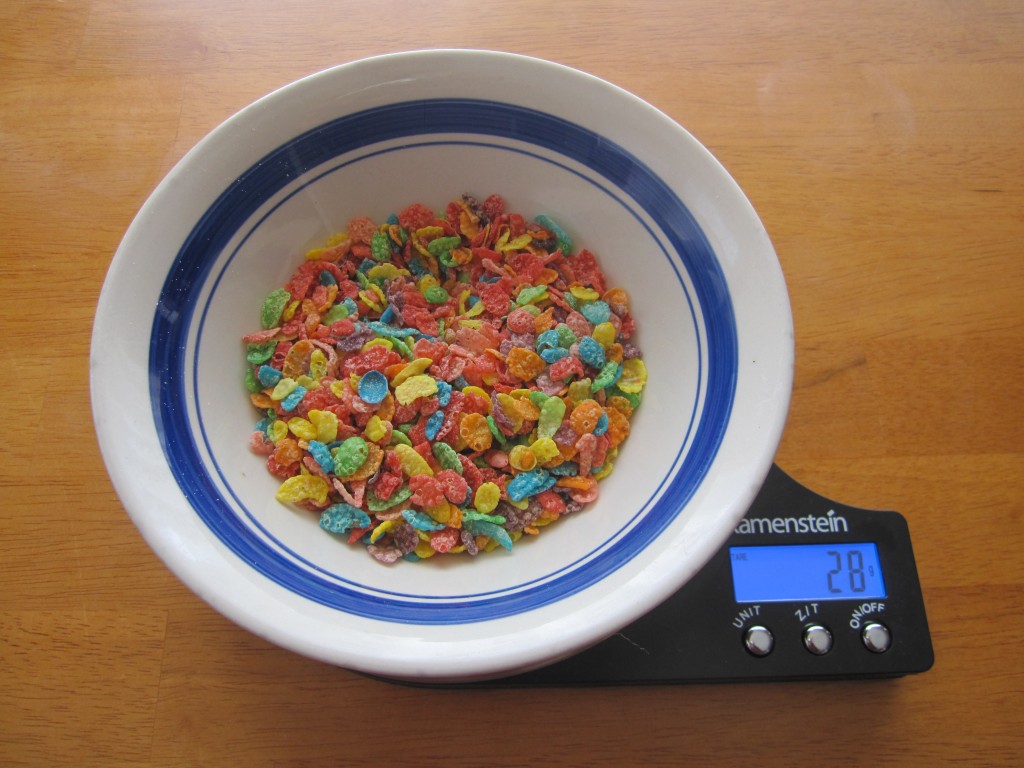
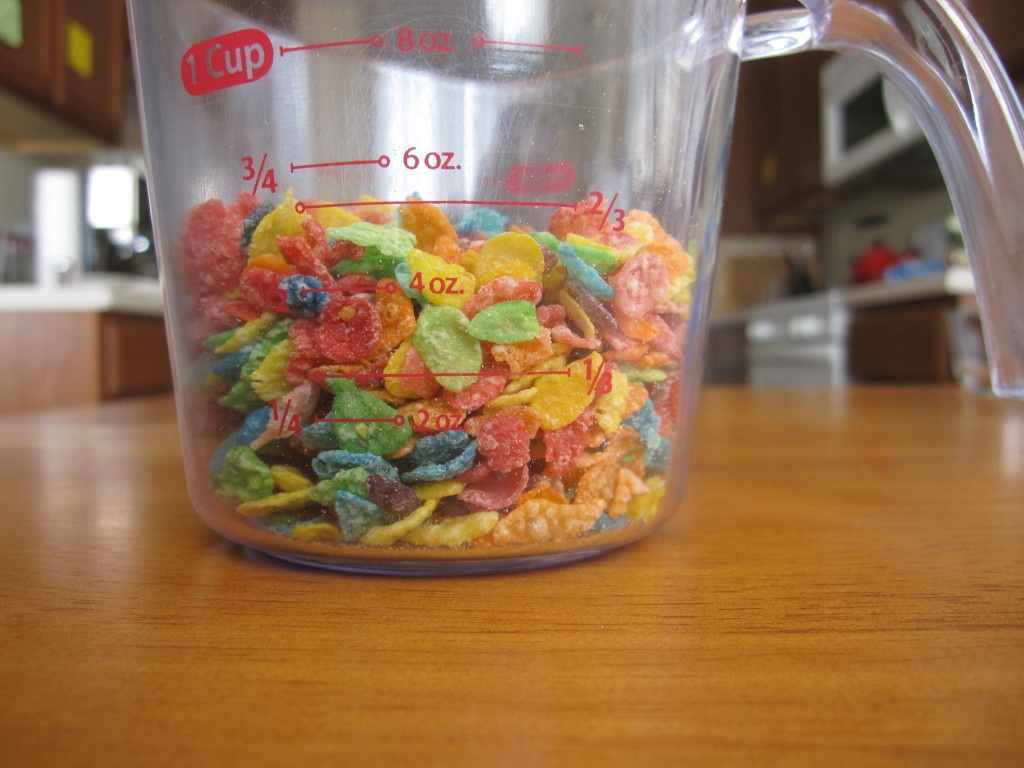
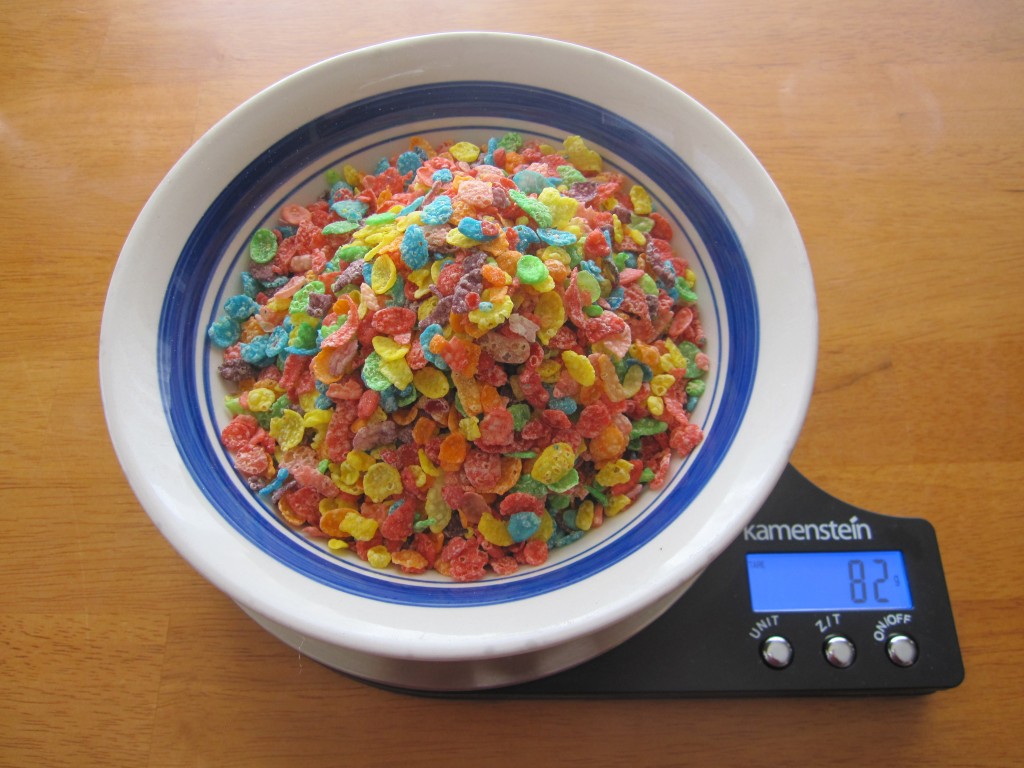
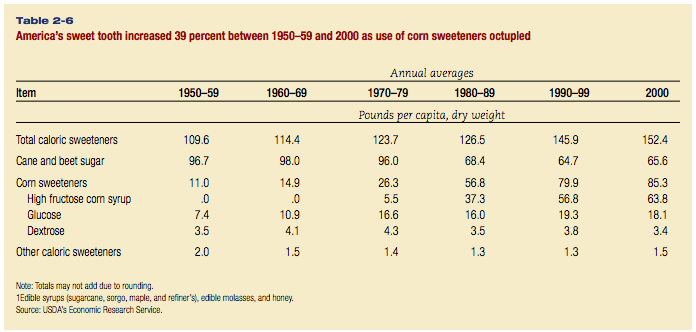
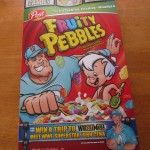
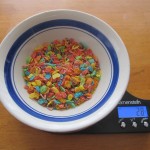
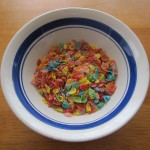
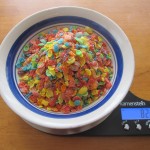
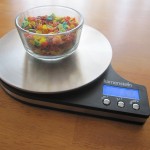
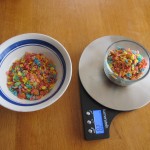

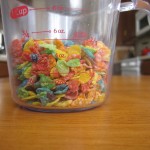


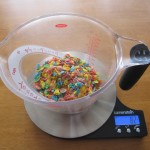
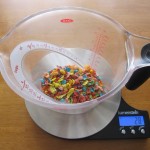
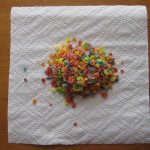
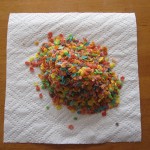
It would seem to me that 152.4 lbs must be the average consumption in the year 2000. It’s probably more now. If you take out all the people who don’t or can’r eat that much sugar (for example -babies, many seniors, diabetics and the health concious), many people probably do eat 2 or three times that much sugar. SAD indeed!
Thanks for the comment, Suzie_B!
I tend to agree with your assertion that many people probably eat 2 or 3 times as much sugar… and that it’s probably increasing year by year.
I have seen some higher numbers about current intake, but I’ve also seen lower. So I thought it best to just talk about the data up to 2000 until I can get a clearer picture of the different estimates of current consumption.
One thing, however, became abundantly clear: serving sizes that don’t reflect how people actually consume + food-like products with lots of sugar = huge amounts of sugar consumption over the year. That’s not even touching other highly refined carbs like flour, etc… that’s in all these products. The scope of our problem is huge…and solving it probably starts with having meaningful conversations about the issues, looking at what we’re doing, etc…
OK, I’m rambling now…
-Michael